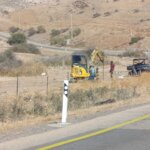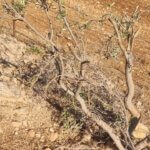AIC: 160 people forcibly displaced from ‘firing zones’ along Jordan Valley during January 2014
First Published by Alternative Information Center on 5th March 2014
Israeli forces raided the northern Jordan Valley on Tuesday and ordered 21 Palestinian families in Wadi Ibziq to leave their homes from 7:00 am to 4:00 pm. The order’s objective was to allow the army to conduct military exercises in the area.
The Jordan Valley, which is considered ‘Area C’ and under full Israeli military control, is a part of the internationally recognized Palestinian territories which have been occupied by the Israeli military since 1967.
According to data of the occupied Palestinian territories gathered by the United Nation’s Office for the Coordination of Humanitarian Affairs (OCHA), in January 160 people were forcibly displaced from “firing zones” along the Jordan Valley.
The UN humanitarian agency claims that approximately 18 percent of the West Bank (or 30 percent of Area C) has been designated as “firing zones” since the beginning of the occupation. At present there are 38 Bedouin and herding communities with a population of 6,200 located in these areas, and another 50 communities with over 12,000 residents in their immediate vicinity. Due to the ban on access and residence, stemming from the designation of their residential or grazing areas as “firing zones”, these communities face significant humanitarian needs and are highly vulnerable to displacement.
The largest incident, which took place on Jan. 30 in a section of the Ein al-Hilwa community (Tubas Governorate) located in a “firing zone”, displaced 66 people, including 36 children. About 100 other residential and livelihood structures here, some of which were funded by international donors, have pending demolition orders.
OCHA also says that over half of the 88 communities located within or next to “firing zones” are in the Jordan Valley area, the vast majority of which (77 communities) depend on herding and farming as their main source of income. These communities are unable to plan and develop, and 60 percent have experienced demolitions since 2000. Community representatives reported that more than 1,200 of their existing structures have outstanding stop-work and demolition orders, including 330 structures funded by donors and provided as humanitarian assistance. At least seven schools (four elementary and three secondary) have pending demolition orders, while children in 57 of the 88 communities have to walk over five km to reach a secondary school.
Over 80 percent of the communities reported a decrease in their number of livestock during the last two years due to a number of Israeli measures, including restrictive planning and zoning, settler violence and military activities.




